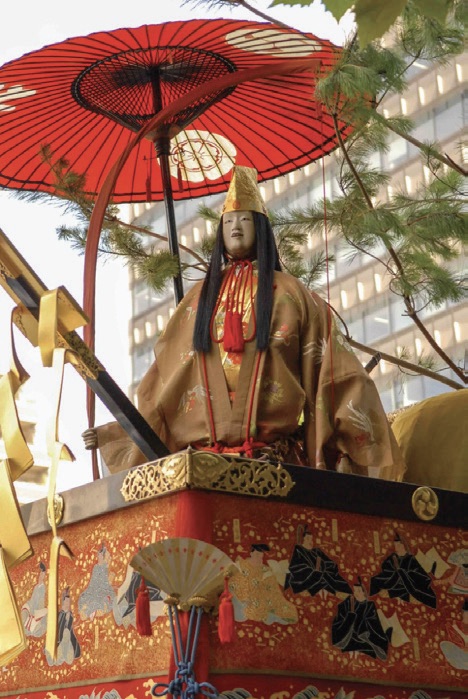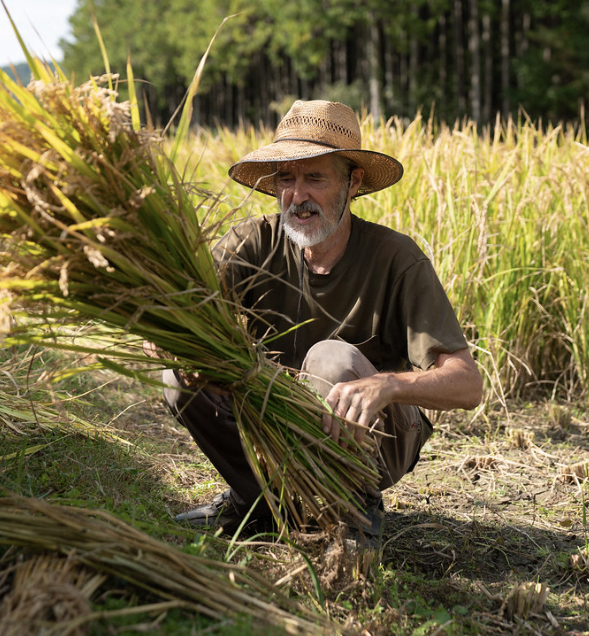ZOOM TALK ON GION FESTIVAL BY CATHERINE PAWASARAT ( July 19)

(Photo by Catherine Pawasarat)
This year, sadly, Kyoto’s Gion Matsuri is not taking place. A festival founded to prevent epidemics has been cancelled because of an epidemic. It’s an unfortunate irony, but as Catherine Pawasarat pointed out in her two hour presentation it is by no means the first time in the festival’s long history that it has not been held. Founded in 869, the festival suffered its longest disruption for over 30 years after the Onin War devastated the city in the late fifteenth century. From being an imperial sponsored event, it morphed into one funded by patronage by Kyoto’s kimono merchants.
The talk covered numerous aspects of the festival, indicative of just what a rich heritage it represents. The main points included:
– the speaker’s personal involvement, which began 30 years with work for the festval shrine, Yasaka Jinja, as professional translator, followed by personal friendship with many of the key figures.
– her realisation that the festival was in essence a grand shamanic event to draw down spirits through tall spires and into the chigo (young boys who act as receptors or vessels; there used to be one on each float). Hypnotic music, humid heat and overcrowded conditions promote a change of consciousness in participants.– the festival is held in the rainy season when in former times diseases such as cholera and dysentry were rife. It was a sickly time of year, followed by the season of death in August.
– at the core of the month-long events is a spiritual festival featuring three mikoshi (portable shrines) which are moved from Yasaka Jinja to the stopping place (tabisho) in Shijo Street.
– the three mikoshi are for the presiding deity, storm kami Susanoo no mikoto, together with his wife Kushi-Inada in the second mikoshi and their eight children in the third.
– the two processions of floats (34 in all) are put on for the purpose of pleasing the kami and promoting their transformation from angry spirits to benevolent. Each float has its own deity or deities.

In recent years the festival has faced difficult challenges. These include the erosion of tradition; decline of the kimono businesses that sponsored floats; loss of traditional townhouses to modern blocks and hotels; aging festival organisers, increased mobility and declining number of young people willing to assume responsibility.
On the other hand, there are positive signs. Crowd funding succeeded in restoring the long defunct Ofune float. University students have given support and acted as volunteer workers at the festival. Ritsumeikan is running a Virtual Gion Festival project, which will greatly aid research. Attention from modern industry has resulted in unexpected connections, such as robotic interest in the Praying Mantis float mechanics. There is greater female involvement, and architects are developing sympathetic designs which retain traditional features.
All in all, this was a wide-ranging and informative talk that drew attention to the extraordinary cultural wealth of this multi-faceted festival. Some mistakenly think of it as simply a procession of floats, but as Catherine demonstrated in this richly illustrated talk, it is far, far more than that.
Taken overall, the festival virtually lasts all year when one takes preparations and practice into account. The actual events take place over the whole month of July, with a variety of rituals, dances and events, some of which constitute a whole festival in themselves. One such is the Byobu Festival, when traditional houses or shops display their most valued items. For those who’d like to know more, Catherine has a book coming out in August, full of insider information from her long friendship with participants. And if you can’t wait till then, take a look at her website here.

For a video of the full talk, please see this youtube link:







Recent Comments